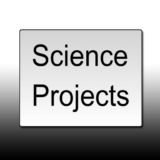Home »
Archive by category "Science Projects" (Page 16)
Surface of The Moon Materials Required: Two large bowls Wax paper Adhesive tape Flour Water Strips of newspaper Modelling clay A flat stick A toothpick Moon does not have an atmosphere of its own. Due to the absence of air or water on the moon, there is obviously no weather or erosion on the moon. Consequently, the surface of the moon differs considerably from the surface of the earth. Create a...
Continue reading »
June 29, 2020 evirtualguru_ajaygourScience ProjectsNo Comment
Star Gazing Materials Required: Moonless night Large Jars A large bag of beans Pencil and paper Many centuries ago, before the invention of telescope, the naked eye was the only tool used to study night sky. How many stars can you see without the use of any equipment? On a clear night, take some friends and go out under the sky. You can carry some blankets, big jars and beans. The...
Continue reading »
June 29, 2020 evirtualguru_ajaygourScience ProjectsNo Comment
Studying Saturn’s Rings Materials Required: Softball Adhesive tape Crayons or marking pens Stiff paper Modelling clay A large room Basketballs Ball of string Paper-towel Tubes Magnetic compass Five chairs Clocks A friend Protractor While there is many planets which have rings around them, the most popular ones are obviously those of Saturn. These rings are more or less made up of infinite ice-crystals and ice-covered particles. The sizes of these structures...
Continue reading »
June 29, 2020 evirtualguru_ajaygourScience ProjectsNo Comment
Shooting Stars Materials Required: A clear dark night, on one of the evening, provided in the chart A bag of dry navy beans A bowl A watch People generally refer to them as falling stars or shooting stars, but the proper term to be used for them are ” Meteors”. A Meteor is a substance, probably a piece of rock or ice that has been travelling in space for quite sometime...
Continue reading »
June 29, 2020 evirtualguru_ajaygourScience ProjectsNo Comment
Galaxies and Stars It is said that a very powerful explosion took place billions of years ago which resulted in the formation of the galaxies. Galaxies contain dust, gas and thousands of millions of stars. These galaxies are gradually moving away from each other since the Universe is constantly expanding. On a clear night we can see thousands of stars in the skies. Most of the stars we see belong to...
Continue reading »
June 29, 2020 evirtualguru_ajaygourScience ProjectsNo Comment
Planetary Years Materials Required: Nine different colours of yarn Scissors Masking tape A long wall Research books Paper and pencil The length of a year depends from planet to planet. The time in which the earth revolves round the sun, is known as one earth year. Since the orbits of different planets are larger and further away from the sun, it naturally takes more time to cover the sun. You can...
Continue reading »
June 29, 2020 evirtualguru_ajaygourScience ProjectsNo Comment
Eyes in Space Materials Required: Pencil and paper Postage Research materials The Space Shuttle in 1990 launched the Hubble Space Telescope. This telescope orbits the earth and provides new tools for research, allowing us to see things, which are very difficult to be seen from telescopes based on the earth. Also being above the earth’s atmosphere, it can record the things in space clearly. Objects are not distorted by shifting gases...
Continue reading »
June 29, 2020 evirtualguru_ajaygourScience ProjectsNo Comment
Observing Earth’s Rotation Materials Required: A clear night A chair Modelling clay Paper-towel roll A clock Paper and peg Some string Adhesive tape With the earth’s rotation, the stars in the sky also seem to be moving. The objective in this experiment is to see how fast these stars move. Tape a string across the mouth of the paper towel and roll around the middle. Now take another string and tape...
Continue reading »
June 29, 2020 evirtualguru_ajaygourScience ProjectsNo Comment
Page 16 of 23« Prev
1
…
13
14
15
16
17
18
19
…
23
Next »























